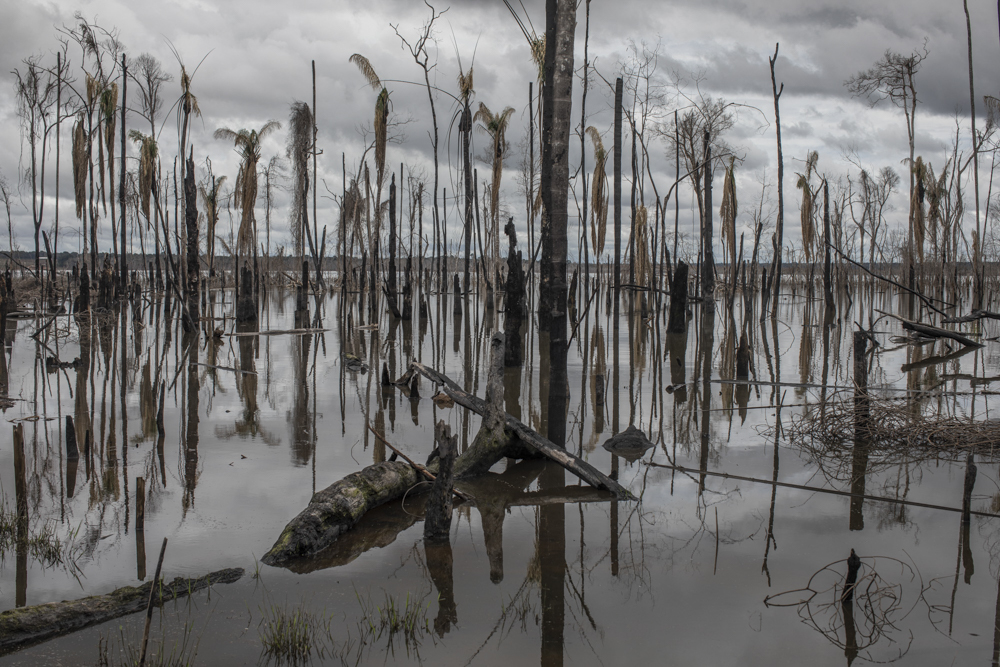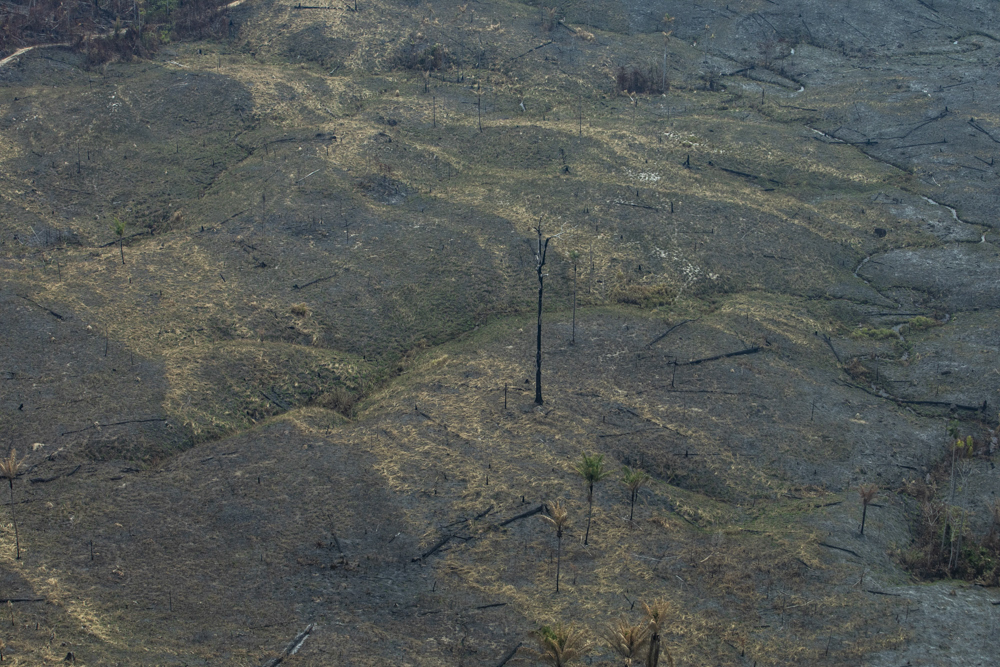Photographers on Photographers: Barry Schwartz in Conversation with Victor Moriyama
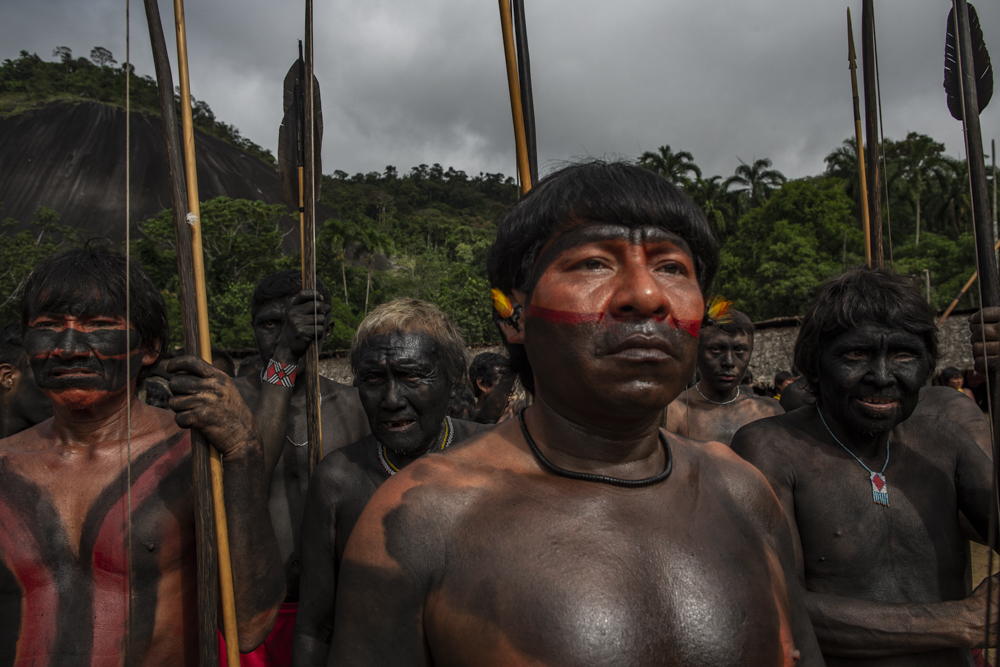
ALDEIA WATORIKI, TERRA INDÍGENA YANOMAMI, RORAIMA, BRASIL: Novembro 2019: Primeiro Forum de Lideranças Yanomami e Ye’kwana realizado na aldeia Watoriki entre os dias 20 a 23 de Novembro 2019. (Fotos: Victor Moriyama/ISA)
I became aware of Victor Moriyama through his essay “Living on the Margins, ‘Surfing’ on the Buses” as part of the New York Times series, “The World Through A Lens”. As I went through his website, I noticed he placed the text description at the end of his photo essays, rather than the top, where most people — myself included — place them. It indicates his sense of the primacy of images to tell stories, part of his training (which included writing) at university, where he learned photography and filmmaking, including how to be a camera operator. Moriyama worked for a television production company for a few years, doing multimedia, advertising, and documentary projects.
~~~~
For the past 4 years, I’ve documented hell in the world’s largest rainforest under the administration of ultra-right former Brazilian president Jair Bolsonaro. The Amazon rainforest experienced its worst moments breaking records of deforestation caused by the greed of the white man, who illegally operates in the region in a predatory and historical manner with the connivance of the Brazilian state.
I document photographically as a long-term project the process of occupation of the Amazon and its socio-environmental impacts for many years, but the “Oco” project intensified between 2018/2022. The word “Oco” in Portuguese means empty inside, devoid of meaning. Indigenous leader Davi Kopenawa, who writes the book’s preface, has a thought in which he says that we whites have empty thinking, because we don’t understand nature and we violate it until we reach its death. “The planet will end up like a big ball of fire”, says Mr. Kopenawa.
I believe that the model of historical exploration of the Amazon is part of the dynamics of the white colonizing man repeatedly violating women (Planet Earth, understood as the sacred feminine), a portrait of the history of Brazil since the invasion of the Portuguese that extends until today.
In this sense, the title of the book becomes urgent as the publication portrays the process of land grabbing that takes place inside the forest and summarizes the entire chain of destruction. First, invaders map trees of commercial value for export, then they cut them down and transport them to be traded. Then, they set fire to the area so that the ashes fertilize the soil for future cattle pasture. After the site is constituted as a large pasture farm, it can become a high-production soy or corn monoculture farm. The result of this process is a large forest converted into ashes, into something hollow. These are the images that close the publication.
I put myself as a photojournalist and activist for climate and nature. This condition has shaped my personal and professional trajectory over the last decade. It is in this context that I hope to sensitize the audience to a call back to Earth, to nature. It is urgent that we join forces: journalists, indigenous peoples, anthropologists, scientists, environmentalists, politicians, young people, to pressure decision makers from companies and governments towards environmental policies for the conservation of natural biomes.
~~~~
Barry Schwartz
You spent two years on staff at a local newspaper in your hometown of Sao Paulo.
Victor Moriyama
It was my second school. It was amazing to work for a local, small newspaper and I learned a lot. I spent two years working for them. And I worked for Associated Press in Brazil as a stringer photographer. It was in 2010, 13 years ago.
You have been working as a photographer or camera person since you got out of school.
Yeah, pretty much.
Normally, the route is still photographer moving into video, but you actually started with motion.
I was working as a cameraman, and then I just realized that photography is more interesting than video. There’s the challenge to capture the one single moment, and I just wanted to be a photographer.
Here in Sao Paulo, the biggest newspaper in Brazil is called Folha de São Paulo. It started a TV department inside the newspaper. It was a very nice project because it was completely done by photographers with a documentary perspective, and they started to film some stories.
I’ve just been working as a freelance photographer for the past decade. The NGOs and newspapers I’ve been working with rarely asked me to do video recording… just special things. Right now, we are doing some B roll to open a story. We are talking about how we can bring in audio recordings or video or drone: which fits better for the story we’re trying to tell. This is pretty new and to be honest, I think it helped me to better understand how I can build my line, how I can be a better storyteller.
I studied that at university, about movie directors and how to be a storyteller, and I think it contributed a lot to my journey.
I tell my students there’s a reason a lot of photojournalists become wedding photographers and move into advertising, all kinds of things, because their skill set has to be so broad.
Yeah, absolutely. If you’re working as a staff photographer for a newspaper, you need to photograph everything, politics, sports, whatever. It’s the best school for photography. I feel comfortable if I need to shoot some something different than photojournalism, because I have the good skills photojournalism gave to me.
There was a time when being a specialist was really the way to go. If you did advertising, beauty, or fashion, or product, that was your lane. I don’t think that’s the case anymore, which is really quite nice.
Yeah, and life is short. I think about how I can try something that I never tried before, like use a flash in the mid-day, or something different just to try it and see if it works. We can develop new skills. This is a very interesting thing about our formation as a photographer, and how you can just surf into different languages in photography.
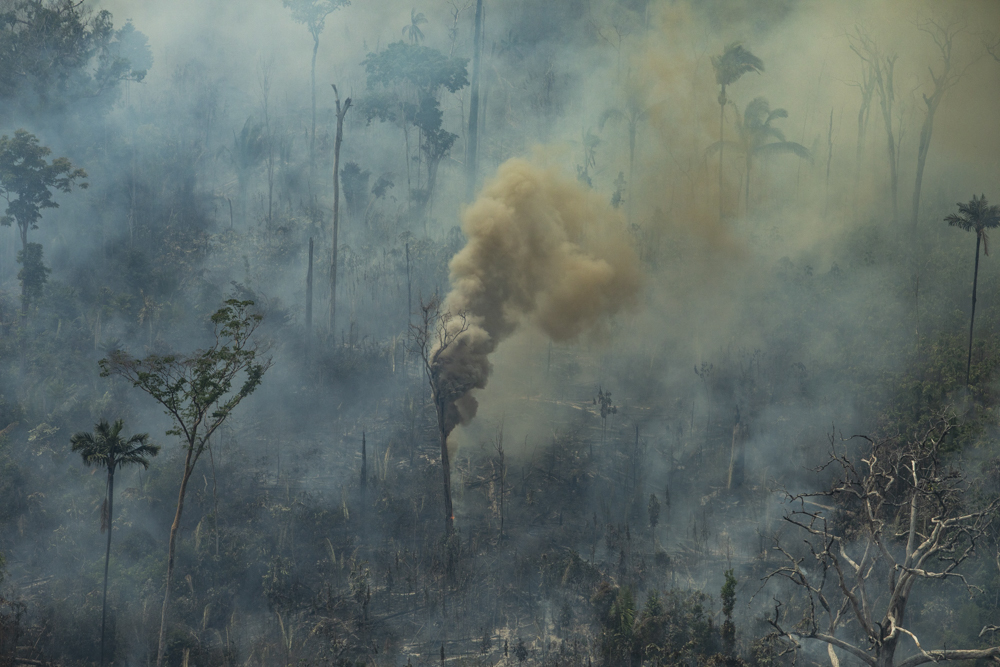
PORTO VELHO, RONDONIA, BRAZIL: Aerial view of burned areas in the Amazon rainforest. (Photo: Victor Moriyama / Greenpeace)
Twenty or thirty years ago, it was unusual for a photo journalist to show in a museum or a gallery. Now, it’s much more accepted.
I think photography is the universal language. We don’t need to translate anything. It touches our hearts and it’s about feeling. I just was listening to a podcast with Sarah Leen. She was the Photo Editor at National Geographic for years and years and she was talking about, we don’t always need text. We don’t need explanation; the picture just needs to talk with our hearts and the feelings that pop up. Photography and photojournalism is about that. The world is a global society, so while everything is local it is also a global issue.
I’m working here on a story nearby my home. It’s about the ocean, but it is talking about the entire world, if we’re talking about climate change. I think people want to see what’s going on in different parts of the world. I am working in long time perspectives, long term projects about the Amazon destruction. The Amazon is the biggest tropical forest in the world so everybody’s interested in it, and thinking about climate change. We have Greta Thunberg and young students saying, hey, we need to stop this, it’s completely wrong, let’s think about that.
Photojournalists, we are on the ground and showing the world to the people. Art has this potential to connect, to touch your heart, to bring you back to feel something different. And with that, you can organize your mind and the way you’re living your life. It can make changes in you, or push for different policies for governments to stop deforestation, or for human rights. I truly believe in the power of pictures, the power of our job to push companies or governments to create new programs, balancing inequality or the environmental crisis. I am an activist for the environment. I just want to keep it preserved because I think it’s so beautiful. We are so far away from nature, from the trees, and from all the knowledge we have from the indigenous tribes here in the Amazon rainforest.
I’m really fascinated by them and by their knowledge and how they see the world, and telling their stories to a global audience. Galleries, museums, institutions, they’re trying to connect with authors like me, or other photographers that are trying to talk about issues and how it connects with the values of these institutions or companies. The Open Society Foundation just opened a local bureau here in South America and they printed a lot of my pictures of the Amazon in their office. It’s beautiful, the ways I can inspire some institutions to talk about this subject.
Selling pictures is complicated. Magnum, or the VII agency, or Noor, are trying to sell pictures, but it’s not easy because we are not in the art markets.
I did an exhibition in Switzerland two years ago. I transferred all the money to the indigenous people to support their causes. They’re struggling to produce success in their communities. I’m glad to have that kind of relationship with them.
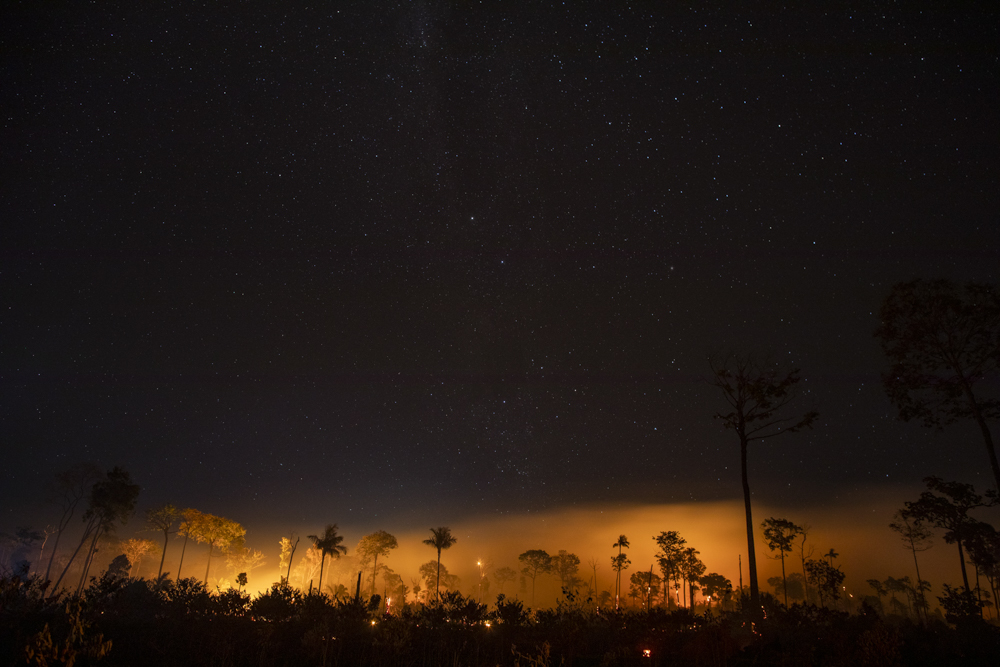
CLAUDIA, ESTADO MATO GROSSO, BRASIL: AGOSTO 2020: Incendio en el bioma del Amazonas durante una expedición de Rainforest Foundation para monitorear la relación entre la producción de soja en Brasil y su relación con la deforestación de los biomas del Cerrado y Amazonia. CRÉDITO: Victor Moriyama para Rainforest Foundation
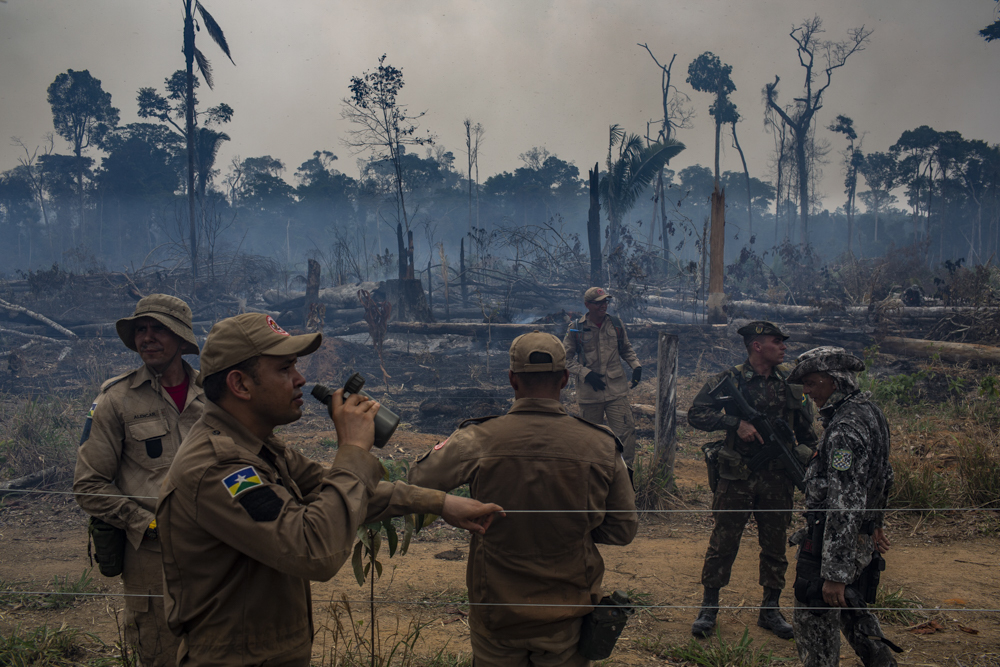
Amazon Firefighters. RIO PARDO, RONDONIA, BRAZIL: SEPTEBMER 2019: Team of brigade members of Ibama (Brazilian Institute of the Environment) work to combat a burning of a farm that expanded to the Amazon rainforest area near the city of Rio Pardo. Residents of the city were sued after setting fire to several environmental preservation areas belonging to the Bom Futuro National Forest, creating a climate of animosity between the local population and firefighters. The Brazilian army accompanies the combatant teams to ensure their safety in forest raids against possible attacks by the local population. CREDIT: Victor Moriyama for The New York Times
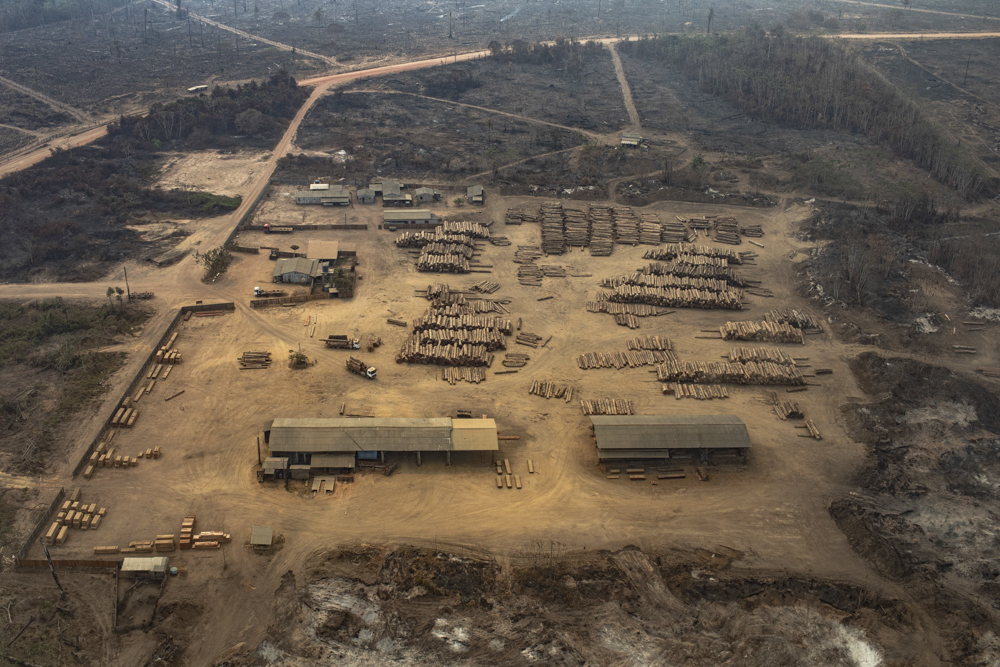
Amazonia Burnt. COLNIZA, MATO GROSSO, BRAZIL: Aerial view of burned areas in the Amazon rainforest. (Photo: Victor Moriyama / Greenpeace)
I did a final pass at everything on your website before we spoke, and I had to take a break, because it was so heavy-going — but it’s never as intense as it is for the person on the ground. You’re in difficult environments, sometimes dangerous environments, in order to tell a story. You have to be alert and awake all the time.
I think it’s much more about the subjects we are interested in and how we can bring these subjects to another level of discussion in society. I remember once I was flying over the Amazon rainforest in a very tiny airplane, a very old plane, and it was raining, and it was almost like a nightmare. I realized that, I’m going to die over here. But if it happens, I am happy with that, because I’m doing one of my assignments, I truly believe I’m doing what I love. I make my peace with death. A lot of people, they never think about death and how it works. For us, it’s very important, because if you’re covering a war, or if you are in dangerous positions, you need to have a very clear and peaceful relationship with that, if we truly believe in what we are doing. That’s why I think photojournalism is a profession that you need to be passionate about, because otherwise, you’re just like doing bureaucratic stuff. Right now, at this moment, we have billions and billions of images. And we need to do something different. We need to tell this story in a different way or in some way that can touch the hearts and minds of different people around the world. I think this is the most important thing.
Did you apply to be part of these exhibitions? Or were you approached to do them?
Sometimes I was invited to festivals, and other times I just applied, but most of them invited me. Visa pour l’image, Perpignan in France during the pandemic. Everybody starts to know your work if you’re doing an exhibition in Arles in France or a festival in Santa Fe, good festivals about photography. They start to invite you to participate. I think, in 2019, the fires in the Amazon rainforest was a turning point. What is going on? The same in California. Everybody knows fire season is so bad. People are dying in Portugal. What happens in Australia? It’s happening in Indonesia. I think climate change is the most important topic right now…and Victor is doing work about Amazon destruction and deforestation. So let’s bring him to our festival to talk about that, and see how we can learn about this. I think it’s a natural, organic process.
In your work, you’re showing the fires, but you’re also showing the people who live there who have been abused and mistreated and marginalized.
Very hard challenge.
The NGOs that you work for want to get the photos into publication. It’s all about the message.
It’s our goal, absolutely. Greenpeace, here in Brazil, are trying to bring celebrities with millions and millions of fans on Instagram to see the Amazon destruction, to look at what’s going on. Then the celebrities, they do some TikTok videos, and I’m here in the middle of the jungle when it is on fire. Greenpeace, it’s very serious for them. I’ve been working for them for the past decade. It’s about the message. This is very important.

Soy Investigation in Brazil. CLAUDIA, MATO GROSSO STATE, BRAZIL: AUGUST 2020:Members of the rural settlement 12 de Outubro in the city of Cláudia in the state of Mato Grosso try to put out the fire from an illegal burning in an Environmental Reserve area in the Amazon rainforest. Fire season in the Amazon biome during an expedition by the Rainforest Foundation to monitor the relationship between soy production in Brazil and its relationship with the deforestation of the Cerrado and Amazonia biomes. CREDIT: Victor Moriyama for Rainforest Foundation
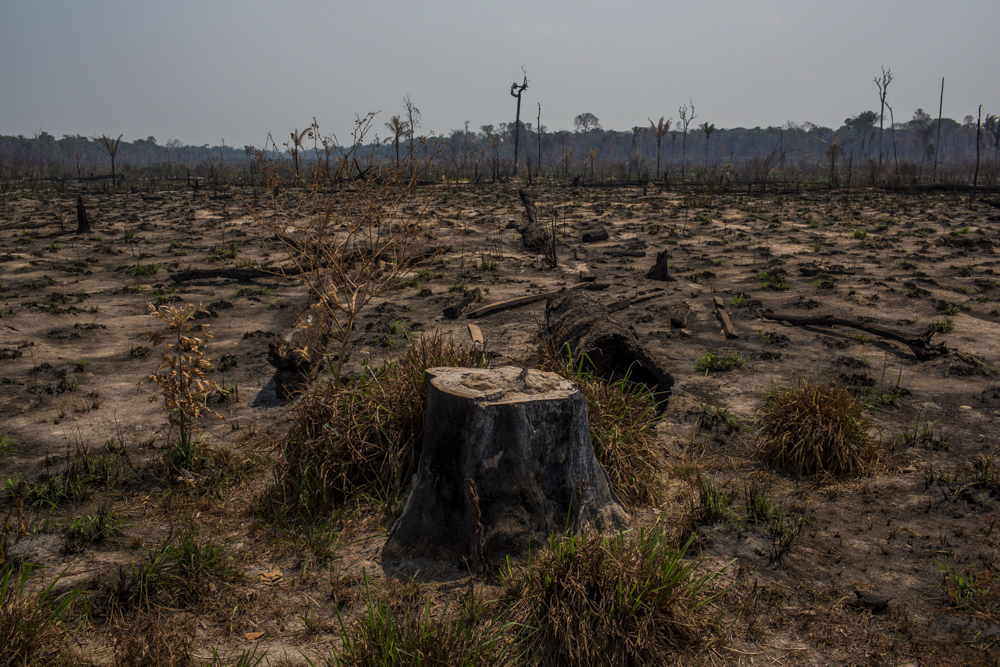
Loggers and Deforestation. APIACAS, MATO GROSSO, BRAZIL – SEPTEMBER 2nd 2019: Forest burned area near to a farm of cattle. The fires in the Brazilian Amazon reached record numbers and rose 180% over August 2018 causing an international political crisis. Foreign companies such as Nestlé and Timberland are analyzing the boycott of Brazilian agribusiness products. CREDIT: Victor Moriyama for The New York Times
You also do a photo column for El Pais.
El Pais is the biggest newspaper in Spain. We had an office here in Brazil for almost 10 years. I worked for them since the beginning, and I realized that I need to write again, and I started my column. It was about photography. But then we had the pandemic, and the Brazilian Bureau was closed by Spain. It was a very short moment of my career, but it was very nice.
What was your subject?
Most of it was to show Brazilian photographers and their work. I mostly wrote about Brazilian women photographers and their work, with a beautiful gallery.
You were doing interviews?
Yes. It wasn’t a weekly column. It was whenever I wanted. I started my career in writing. It’s almost the same. We have this passion. When I was a young kid, I said to my mom — I was 8 years old, 10 years old — hey, Mom, I want to write a book. She agreed — amazing. I had no ideas about being a photographer.
The impulse is the same. You take photos to find out what you’re seeing. If you write, it’s to find out what you’re thinking. I think writing is the same as the photography in that way.
Yeah, it’s a very similar process.
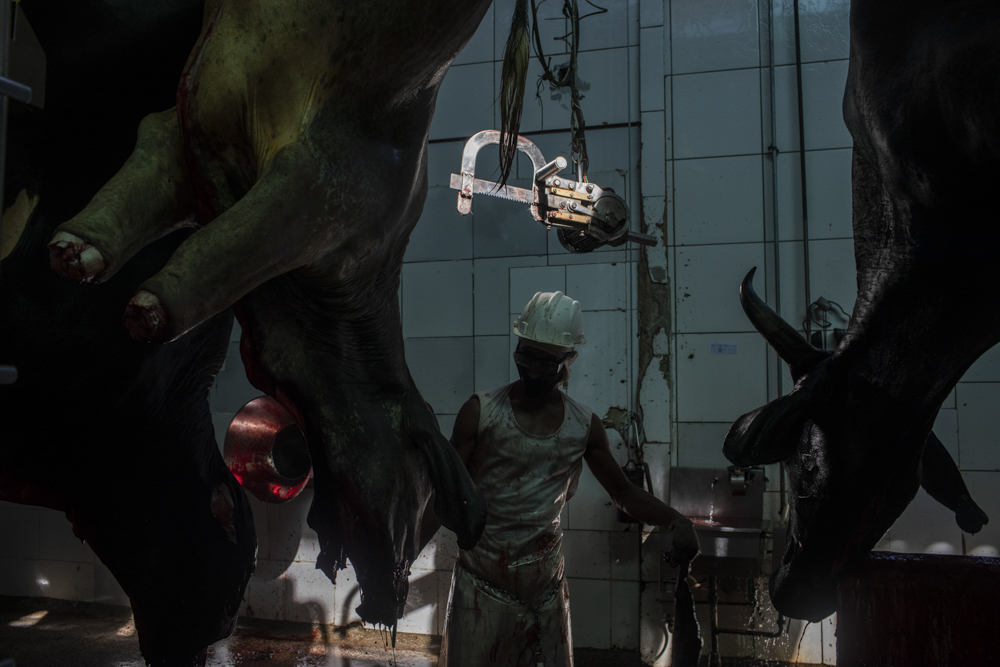
Illegal cattle and leather in Amazon Forest. PORTO VELHO, RONDONIA STATE BRAZIL: 12 JULY 2021: Men work in a beef slaughterhouse in the city of Porto Velho. Cattle expansion in protected areas is the main agent of deforestation in the Amazon. Farms in protected areas are illegal and constitute an environmental crime, however, there is little oversight by the Brazilian government. CREDIT: Victor Moriyama for The New York Times
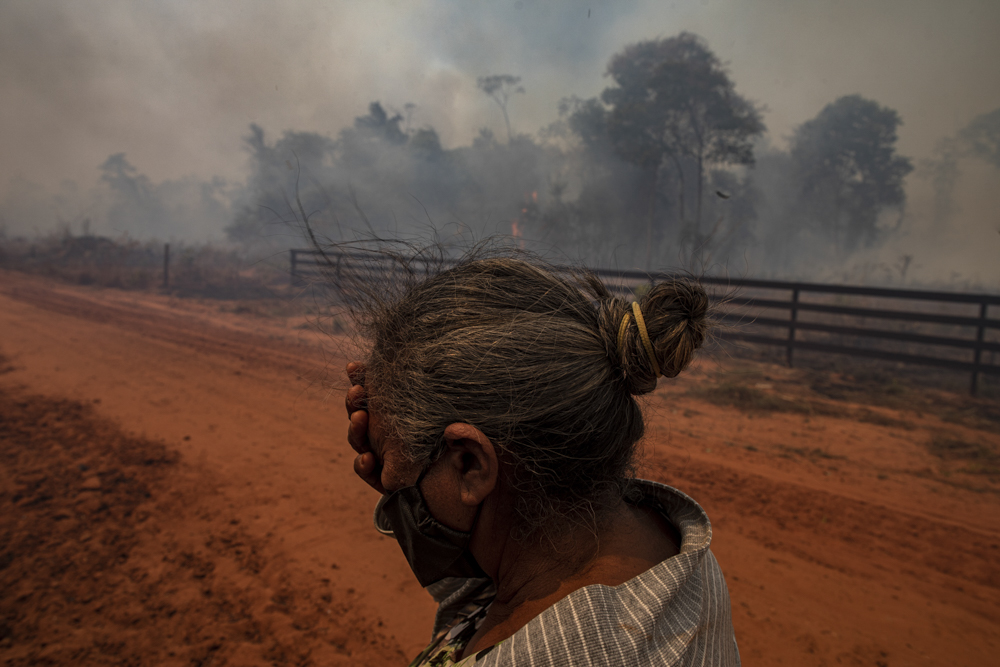
Soy Investigation in Brazil. CLAUDIA, MATO GROSSO STATE, BRAZIL: AUGUST 2020:Members of the rural settlement 12 de Outubro in the city of Cláudia in the state of Mato Grosso try to put out the fire from an illegal burning in an Environmental Reserve area in the Amazon rainforest. Fire season in the Amazon biome during an expedition by the Rainforest Foundation to monitor the relationship between soy production in Brazil and its relationship with the deforestation of the Cerrado and Amazonia biomes. CREDIT: Victor Moriyama for Rainforest Foundation
You do mentoring and teaching. How did that start?
It happened as a huge influence from Ed Kashi. I have a great relationship with him. Then I realized all of them at VII are doing that, at least Ed, Ron Haviv, Sarah Terry, and other photographers.
I saw one of the last tours they did as the original group of seven. They came to Art Center in Pasadena for two days, not doing workshops, just being there and doing presentations
Jim Nachtwey, too?
Yes. It was amazing to just be in the room with him. Some people, they have a presence.
Yeah, he has a presence. Absolutely. Jim is amazing. I’ve seen his TED talks, and his “War Photographer” documentary film. We have his book, “Inferno”.
I learned from Ed Kashi and the VII folks how important it is to be a mentor to people. Ed did that for me for a couple of years. It is a very important thing to stay with young photographers for a year. We have weekly conversations or monthly conversations, to help provide more tools for them; how I can express myself on this subject or how I can develop my photographic language. I just stopped a little bit because I have a young baby, but it’s very important. It’s a very rich process, because I learn and they learn, seeing how I can empower them to to be good storytellers and support their ideas.
I want to create more connections between us, and empower our community as photographers in the world because I think we are very far away from the rest of the world. For instance, I was in Washington DC two weeks ago at the National Geographic Summit, and we had seven Mexican photographers, lovely people. And we just had one Brazilian photographer. Something is wrong, because Brazil is bigger than Mexico, we have a lot of a lot of issues pressing over here. We’re not accessing some important festivals around the world. Let’s think about photography, let’s print your pictures, put them on the wall and see how we can edit this job.
It’s important for me. I like talking with students. I’m invited to join universities and journalism courses and it’s a pleasure because sometimes the way I see the world, or my words or my images, can touch some hearts.
For instance, I saw Sebastião Salgado’s book, “Workers”, which my mom bought, and when I saw the pictures I said, what is this?
How old were you?
I was like a young kid, 15 years old. I was listening to Lindsey Addario. She was talking about that. When I saw the Sebastian Salgado pictures, I realized that I want to do that.
He’s doing similar things to what you’re doing. And he’s a Brazilian to boot. I think teaching is to give back. And to make it real.
I think it is magical. I like this educational perspective. For me, it’s another part of my job.
~~~~
Victor Moriyama is a photographer, educator, and writer.
Website: https://www.victormoriyama.com.br
Instagram: https://www.instagram.com/victormoriyama
Barry Schwartz is a photographer, educator, and writer.
Photography: https://barryschwartzphoto.com
Blog: https://barryschwartznotbarryschwartz.com
Instagram: @barryschwartz1
Posts on Lenscratch may not be reproduced without the permission of the Lenscratch staff and the photographer.
Recommended
-
Paccarik Orue: El MuquiDecember 9th, 2025
-
Lauri Gaffin: Moving Still: A Cinematic Life Frame-by-FrameDecember 4th, 2025
-
Dani Tranchesi: Ordinary MiraclesNovember 30th, 2025
-
Art of Documentary Photography: Elliot RossOctober 30th, 2025
-
The Art of Documentary Photography: Carol GuzyOctober 29th, 2025

